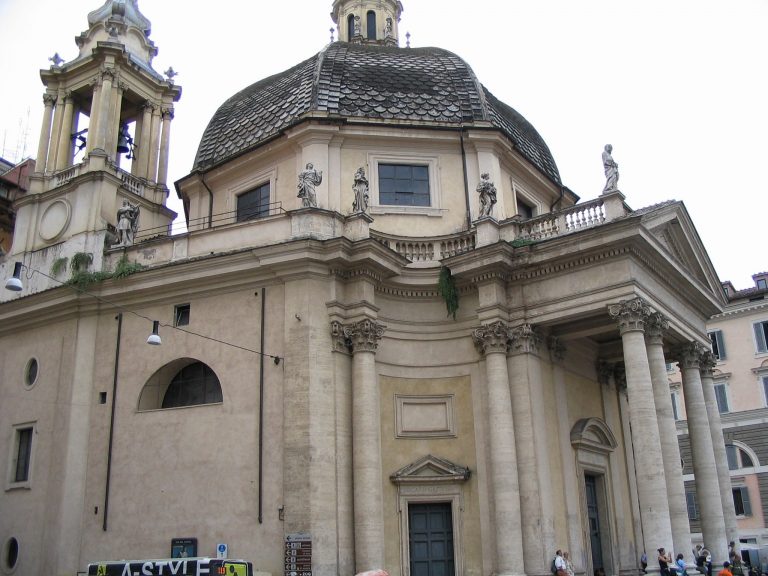We are in the center of ancient Rome. Here, Rome built after having dried up the marshlands its Forum where all the political, religious, and commercial activities were held, between the Palatine, the Capitol, and the Esquiline hills. It is not easy to move about these ruins without having some knowledge of the ten centuries of history – from the 6th century BC to the Byzantine age – only then, the monuments become meaningful. From the archaic Lapis Niger ( Black Stone ) to the Column of Phocas – the last monument to be built in the Forum – dating from 607 AD placed to celebrate the Byzantine Emperor Phocas, when Rome had lost its splendor, The orators spoke from the Rostra to the Romans who had to elect their authorities.
The Curia, the Senate-houses and the political center of ancient Rome, seems to have been built for the first time by Tullus Hostilius. It was reconstructed in 52 BC, but a new one was inaugurated in 29 BC by Augustus. What we see today is the last reconstruction wanted by Diocletian in 303 AD. The Curia has a magnificent interior although the present wooden ceiling is modern. It was able to seat 300 senators. In the Curia, the so-called Plutei of Trajan is exhibited. They are two marble sculptured balustrades that probably decorated the Rostra and emphasized the merits of Emperor Trajan. They also show how the Forum was laid out at the time.
Cheap Hotels in Rome
If the Curia was the political center of Rome, the Basilica was the place where justice was administrated. The typical basilica was a great rectangular room with arcades on its sides. The Basilica Emilia is the most ancient basilica and the only one of which we have remained. It was founded in 179 BC by the censor Aemilius Lepidus. It looks like the Via Sacra and was originally richly decorated, but during the Middle Age, it was ransacked by the barbarians. Thanks to archaeological excavations a marble frieze of great interest for the understanding of the origins of Rome was found here. The Basilica Giulia, built by Caesar, was also destroyed. The Maxentius Basilica has three aisles and is supported by massive walls instead of the usual colonnade.
After the Curia and the Basilica, the temple was the most important building of the Forum. The remains of the Temple of Vesta from the end of the 2nd century BC, are entirely in brick, as is the nearby House of the Vestals; the latter is a large rectangular atrium arranged around a spacious courtyard. Inside the round temple dedicated to Vesta was kept the sacred fire, the symbol of the state, which hadn’t to burn out. In the Forum, there are the remains of the Temple of the Dioscuri, the mythical brother’s Castor and Pollux, winners of the battle against the Etruscans and Latins. The temple was built in 484 BC, and then reconstructed in 117 AD, but the only three remaining pillars belong to a subsequent reconstruction done at the time of Tiberius ( 14-37 ).
The Temple of Saturn is amongst the most ancient in Rome and is found at the foot of the Capitoline Hills. Its use was to keep the Public Treasury of the city. Further ahead, are the remains of a colonnade that was found a century ago, the so-called Portico of the Dei Consentes. Probably the temple was dedicated to the twelve great divinities of Olympus; inside were kept golden statues of the gods and therefore the building is considered to have been the Roman version of the Greek Pantheon.
The Temple of Concord is also found in the Forum. It is an important monument built in 367 AD by Furius Camillus to celebrate the end of the struggles between the patricians and the plebeians; the podium has been restored many times. After Caesar was assassinated, his body was cremated in the Forum and a pillar was built in memory of him. In 29 BC a Temple was dedicated to Caesar by Augustus, the first example of the deification of an Emperor.
Temple of Saturn Roman Forum
Temple of Saturn
